‘Fifty Years to Life’: Jerry Glanville Just Can’t Quit Football

A dented dry-erase board greets visitors outside Room 340 of McMaster University’s Les Prince Hall, which pretty much resembles every other single-residence unit in the history of higher education. Nestled amidst several hundred acres of marshland in Hamilton, Ont., this third-floor shoebox contains all the classic dorm amenities: drab carpet, fluorescent lights, extra-long twin mattress with the approximate firmness of plywood.
“Isn’t this like prison?” says 76-year-old Jerry Glanville, kicking aside his sandals and flopping onto the so-called bed. “I wonder how many multimillionaires have spent the night here.”
At least one. It’s late May and the afternoon sunlight is slipping through half-drawn shades, highlighting patches of paint missing from the white-brick walls. A small spider crawls down the bathroom door. Maybe jail isn’t too far off. “I’ve been in the dormitory since 1958,” the former NFL coach says with a graveled southern drawl. “You’d think they’d let me graduate.”
Whatever your last memory of Glanville, chances are little has changed in the man. He still prowls the sideline in a cowboy hat and sunglasses, wearing all black. He still unleashes hell upon opposing QBs, employing the same principles behind his Falcons’ famed Grits Blitz defense, single-season NFL record-holders for fewest points allowed, 9.2 per game in 1977. He still drives terrifyingly fast, as he did for seven years on the NASCAR and truck circuits in the ’90s. He still sprinkles song lyrics into conversation, such as this favorite hook from friend Kris Kristofferson: “He’s a walkin’ contradiction, partly truth and partly fiction. . . .” And he is still, in his words, “addicted to football.”
Reaching across a paper-thin dorm pillow, Glanville grabs a spiral notebook from his windowsill, each page filled with inscrutable scribbles of gap pressures, zone coverages and any other scheme his mind dreamt up in the middle of the night. He developed an obsession for diagramming formations when he was a young Detroit Lions fan in the Tiger Stadium bleachers. Since then he has kept a notepad handy in case inspiration strikes, but on rare occasions he has made do by jotting on restaurant napkins, pizza boxes and paper towels. One summer he and his wife, Brenda, were touring the Sistine Chapel when she nudged him and remarked, “You may want to look up at the ceiling and forget about that defense.”
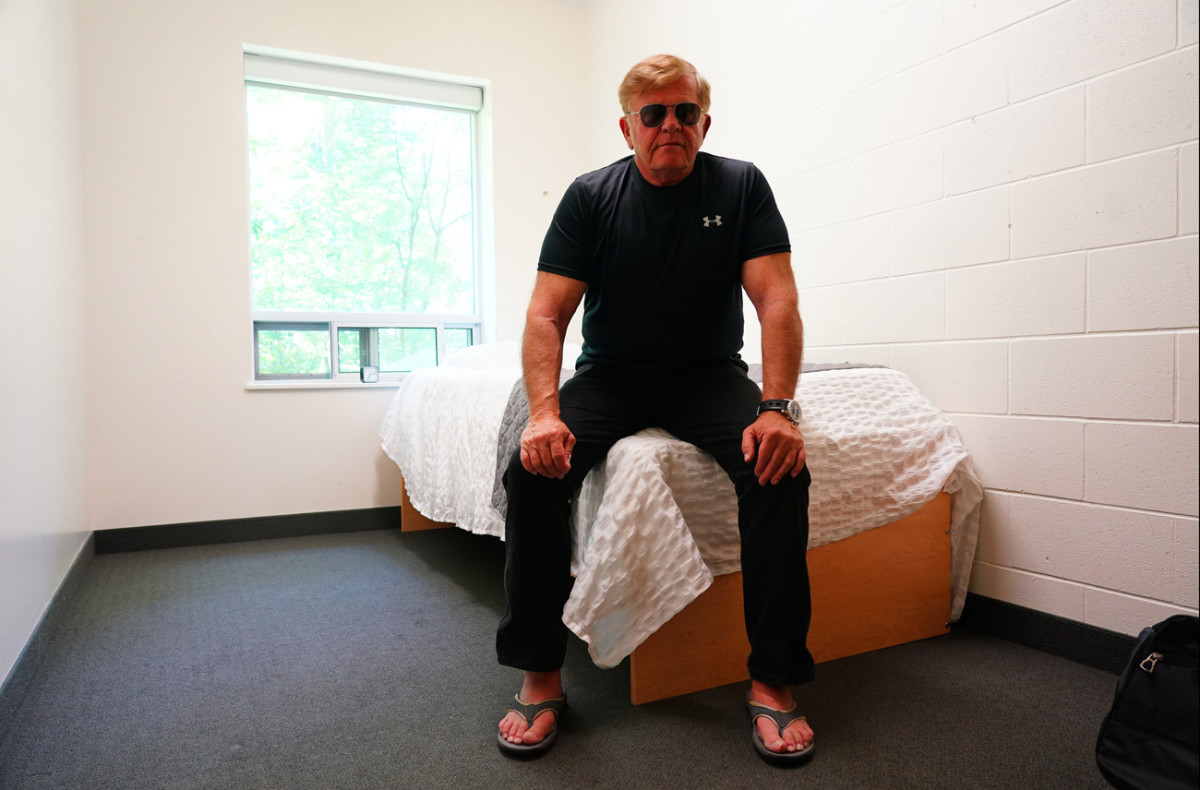
Today Glanville is midway through the second week of his first training camp as the defensive coordinator for the Hamilton Tiger-Cats of the Canadian Football League. It’s his first pro job since leaving Atlanta in 1993. He has packed light for the journey. A single suitcase sits on the dormitory floor, essentials strewn across a desk: a box of protein bars, a bag of toothpicks, a bottle of Tums and a stack of three copies of God’s Wisdom for Navigating Life: A Year of Daily Devotions in the Book of Proverbs, which he will distribute to players and coaches as gifts. He feels kinship with the clergy. “Preachers preach,” Glanville says. “And coaches coach.”
The Man in Black picked an unusual spot for his revival, 700 miles northeast of his home in Knoxville. (Google forecasts a 10-hour drive; Glanville claims to need less than eight.) Most of his coaching contemporaries have long ago settled into retirement—rambling around fairways, casting fishing reels, spending time with the grandkids. A few have even reached out to him, phoning from the football afterlife with the same question.
“Every day someone wants to know,” Glanville says. “ ‘What the hell are you doing there?’ ”
So, what the hell is he doing in Hamilton? At first blush, this steel city along Lake Ontario seems an odd home for an old-schooler such as Glanville. The Ticats’ quarterbacks study film with virtual reality headsets; the entire team does yoga on the “recovery days” mandated by the CBA. It’s a far cry from when Glanville challenged his Houston Oilers’ defense backs in 1988 to break 100 facemasks—they accomplished it by Week 12. The CFL forbids full-contact practices in-season.
It’s not all about the money, though his low-six-figure salary is nothing to sniff at. Extra cash is no issue. In May 2014, Glanville sold 2,800 square feet of memorabilia at his lakeside property in Dawsonville, Ga. There were bowl-game watches and autographed footballs; belt buckles and racing jackets; cowboy boots stitched with the logos of NFL teams, including a pair fashioned entirely from Wilson pigskin. Drawing particular attention was a gold chain and cross once owned by MC Hammer, whom Glanville used to invite onto the sidelines during Falcons games. The estate sale, held before the Glanvilles moved to Knoxville, brought Brenda to tears, but her husband had no qualms about ditching five decades of nostalgia. “If you haven’t looked at it in the last 10 years,” he says, “you don’t need it.” Asked how much his estate sale fetched, Glanville’s jowls crest into a mischievous smirk: “I would never say that. I’d have the government after me.”
Maybe Glanville is still kicking around because of players like Mike Filer. Upon learning that the Ticats’ tattooed center owns a ’69 Chevy Nova and enjoys drag racing, Glanville decided they would henceforth rev one another up before practices by meeting on the sideline, crouching into invisible drivers’ seats, pretending to slam on the gas and loudly shrieking. It’s an amusing sight, considering Glanville’s old enough to have coached most of his players’ fathers—which is exactly what he did with receiver Luke Tasker. Before Hamilton’s season-opener against Edmonton, Glanville hugged Luke because, well, he’d done the same thing to his father, Steve, when Steve was an Oilers rookie in 1985.
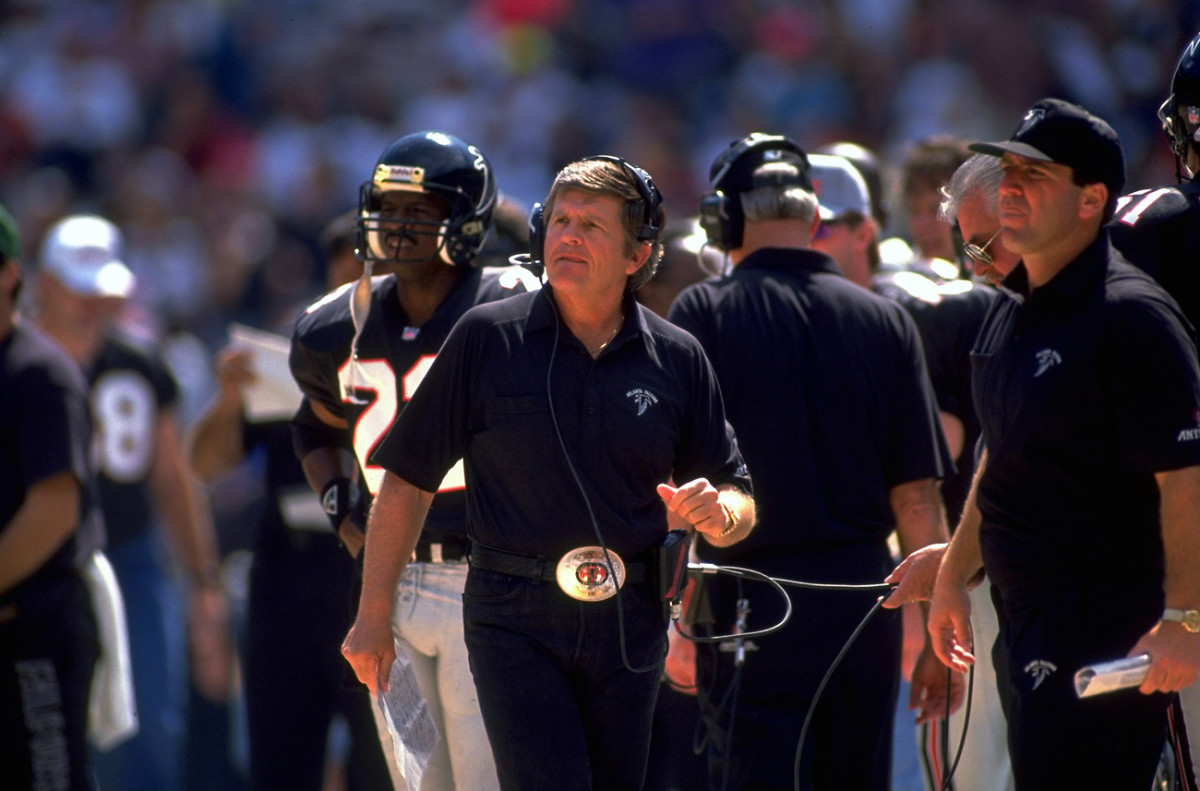
That was the same year Glanville was promoted from defensive coordinator to Houston’s head coach. He would last eight more years in the NFL, going 33–32 with the Oilers and 27–37 with the Falcons—his 60 career victories rank one behind Rex Ryan for No. 78 on the all-time NFL list. So-so record aside, Glanville is best remembered as a players-first personality who presided over the Deion Sanders–era Falcons, encouraging bone-crushing hits and calling for all-out blitzes; who arranged pregame concerts each Saturday at the team hotel—Kristofferson and Jerry Jeff Walker were frequent attractions—and whose feud with Hall of Fame Steelers coach Chuck Noll proved that he gave zero damns about what anyone else thought.
How does Glanville account for his style? For starters, he was raised in the Eight Mile projects of Detroit—“Eminem made a movie about my neighborhood”—by a tireless mother who, he says, “gave me the greatest gift she could: She made me totally and completely color blind. And I think she made me a good football coach.” He also draws significant inspiration from his favorite musical genre. “The blues is about getting knocked down 10 times and getting up 11. That’s why football and the blues meld together.”
Glanville appreciates those who work hard, and he has little patience for those who don’t—as a party-hard rookie quarterback named Brett Favre learned in Atlanta. (“He couldn’t sit up in the meeting room,” Glanville says. “He’d fall asleep.”) It seems that Glanville and Hamilton are a perfect match. Not only has he already found a local pub that hosts live blues every Sunday, but the CFL is also filled with his kind of players: those seeking second chances—like the Ticats’ backup QB, the only person in Hamilton more famous than Glanville, who greets him in a stairwell before one afternoon workout.
“Hey now! If you’re going to keep throwing spirals, I need to find another defense,” Glanville says, slapping Johnny Manziel on the shoulder pads. “No one told me about no spirals.”
Johnny Manziel’s Last Chance—as a Backup in the CFL
Glanville connects with his players by spinning stories. There was the time he scarfed down hamburgers with Danny DeVito and Jack Nicholson on the set of the 1992 flick Hoffa, in which Glanville played a bodyguard who got clocked over the head with a bat. And the time flames engulfed him and his racecar during a qualifying lap at Kentucky Speedway in May 2003, requiring skin grafts from his thighs to his right arm. And the time he posed for pictures atop Saddam Hussein’s ornate throne while visiting Camp Victory in ’04. At training camp, the Ticats go through stretches while MC Hammer’s “2 Legit 2 Quit” thumps over the speakers. But how many Tiger-Cats know their coach appeared in that music video?
Many of Hamilton’s players fall into the same category as linebacker Larry Dean, a native of Tifton, Ga., who was raised on tales about the famed Grits Blitz D. “I knew the legend of Jerry Glanville,” says Dean. “Then, when he became our defensive coordinator, a couple of my older peers from back home told me to ask me about the Elvis tickets.”
Here is the version of that story you may know: An eccentric coach, fueled by nostalgia and delusion, leaves two tickets at every NFL stadium’s will-call desk, under the name ELVIS AARON PRESLEY, hopeful that the King—whom most people believe died in 1977—will emerge from hiding and watch some ball. The tradition continues, year after year, guaranteeing that every article about the coach will mention Elvis in the first few paragraphs. “I’ve given up trying to repel that story,” Glanville says. “It’s going to be there forever.”
He hasn’t exactly run the other way. His 1990 autobiography is titled Elvis Don’t Like Football. But Glanville insists that key details are all shook up. As a gag, the 1988 Oilers coaching staff did indeed leave tickets for James Dean at the opener in St. Louis and for pseudonymous airline hijacker D.B. Cooper at a game in Seattle. (Cooper was suggested by a 37-year-old defensive assistant named Nick Saban; FBI agents staked out the stadium in case Cooper actually showed. He didn’t.) But in reality, only once was Elvis left comps. Once. And that one wasn’t even plotted by Glanville. “I blame June,” says Glanville. “It was his idea.”
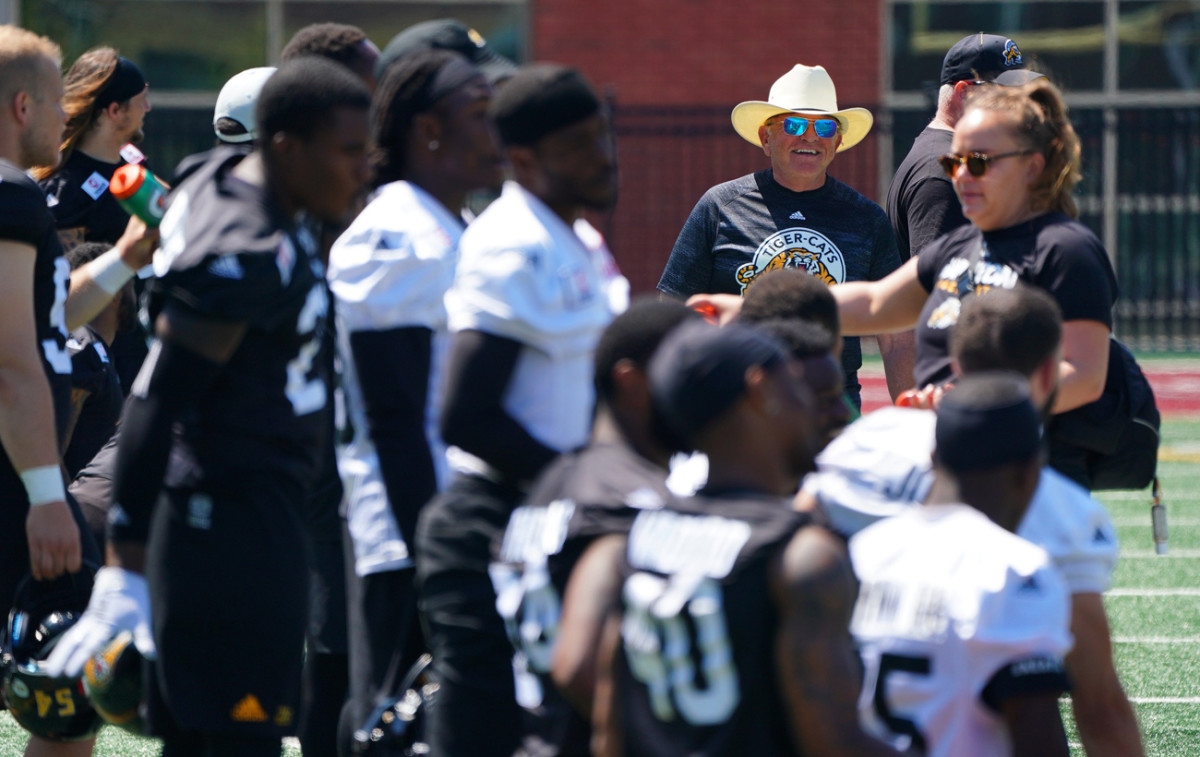
That would be June Jones, currently Hamilton’s head coach. A Falcons backup QB in the 1970s, Jones is the only person who’s ever persuaded Glanville to wear something other than black. (“I made him take his team picture at Hawaii,” where Glanville coached under Jones in 2005 and ’06, “in a green-and-yellow aloha shirt,” says Jones. “He’s never lived it down—because I always bring it up.”) As the Oilers’ quarterbacks coach in 1988, Jones learned before an exhibition against the Patriots in Memphis that Elvis would be honored at halftime, and that inspired the prank. But that was the only time. “Some stories you don’t want to screw up and tell the truth,” Glanville says, “because the fabrication is way better.”
Jones (who’s 11 years younger than his longtime friend) is the stern yang to Glanville’s eccentric yin. Together they have made coaching stops in Houston, Atlanta and Honolulu, as well as at three college All-Star games, before Jones reunited the band once again last season, in Hamilton. Like Glanville, Jones hasn’t shed his full-throttle tendencies; he still operates a Run N’ Shoot offense, under which starting QB Jeremiah Masoli recently tied a CFL record with nine straight 300-yard games. Jones has, however, abandoned his Run N’ Shoot hiring practice: He and Glanville used to take candidates out for a spin in Glanville’s 5.0 Mustang, and “if the guy wasn’t paralyzed—white-knuckling, grabbing everything,” says Jones, “then we hired him.”
Reckless rookie: Inside Brett Favre's strange season with the misfit Atlanta Falcons
Jones and Glanville are symbiotic souls. After resigning his post at SMU in 2014, Jones coached high school football in Honolulu for two years because he couldn’t stand being on the sidelines of, well, being on the sidelines. When Glanville started flooding his phone with late-night text-message scouting reports of SEC games, Jones knew his old buddy was itching for another shot. “Whoever got a head job first, we were headed that way,” Jones says. “We told each other: Let’s do one more together.”
So maybe Glanville is in it for the camaraderie. There’s A.J. Smith, a 29-year-old guest assistant at Ticats camp, who used to drive hours to meet Glanville in towns around the South so they could pour over practice tape. And there’s O-line coach Dennis McKnight, a guard in the NFL from 1982 to ’92, who recalls facing “that motherf-----’s defense, a relentless wave that never ends.” And there’s linebackers coach Robert Lyles, a special teams ace under Glanville for the Oilers and Falcons, whom Glanville calls Captain Video for his love of film.
Glanville rarely refers to fellow coaches by their given names. Past colleagues have included Whitefang, Black Ops, Shark, Dynamite and, plainly, Sweater. It’s one of many habits that make him, as Jones says, “one of these guys where you love him or you don’t like him at all.” In the past, for instance, Glanville has printed out and distributed something he calls “the Cowboy Code,” a 10-point list of ethical principles he wants staffers to abide by. (No. 3: Always finish what you start.) He also encourages them to open their lockers before practice and speak to an imaginary mirror. Glanville has done this himself going back to the 1970s, and each time he begins the same way: Self, are you listening? I’m talking to you. You better get going or you’re going to get fired.
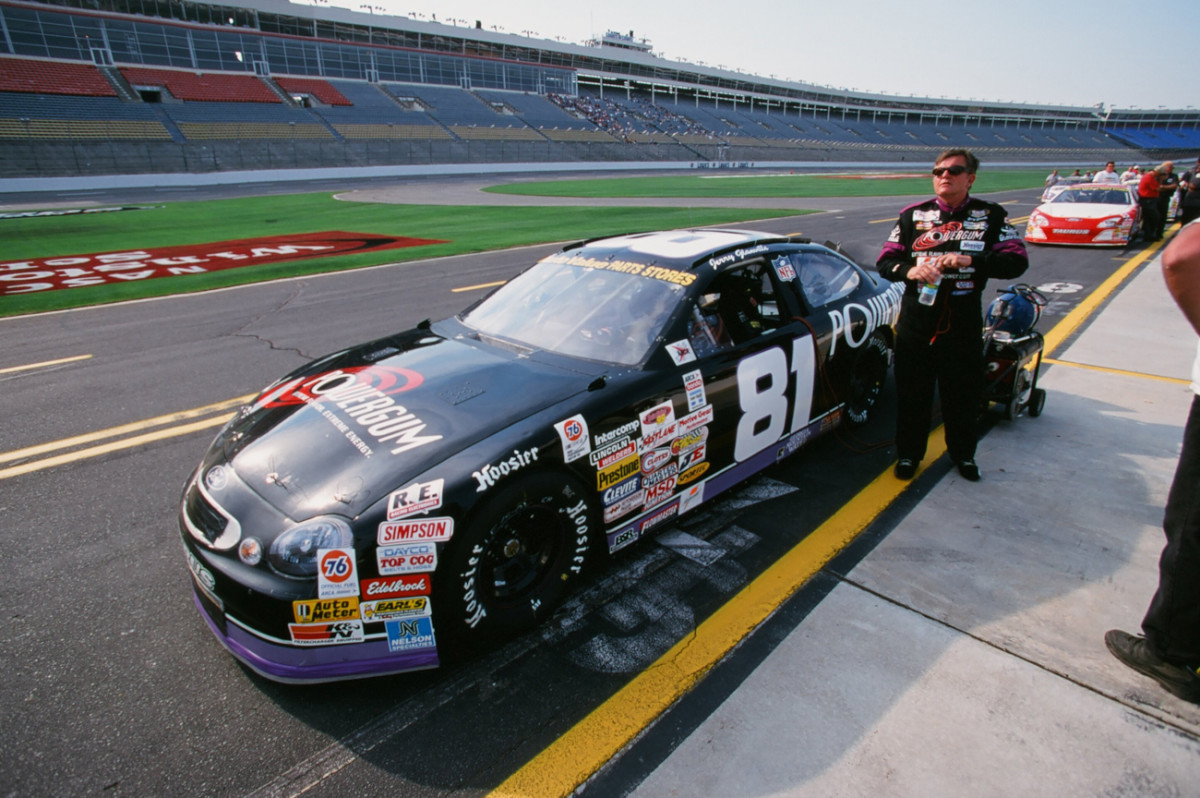
Glanville holds staff-wide weightlifting sessions to build camaraderie. He dictates into a tape recorder during practice because he hates interrupting drills. (“The worst thing you can do is mess with any assistant’s [standing] with players.”) He maintains a strict no-cursing policy because he believes profanity demeans. (“I cussed at Hawaii once. The players stopped practice and got me a cup of water.”) Even his trademark four-inch-brim cowboy hat serves an important purpose: Glanville has had precancerous skin cells removed from his face and an almond-sized carcinoma tumor from his ear.
“How about when you tell people I’ve never had a drink?” he says, laughing one night on his way to the cafeteria. “Everybody thinks I’m drunk most of the time.”
Glanville hobbles onto a stage inside a windowless McMaster lecture hall, the bright light of a projector reflecting off his sunglasses. It’s 7:40 p.m. Members of his defense are squeezed into auditorium seats, hunched over their playbooks and sipping coffees. Glanville holds an iPhone aloft. “Anybody get a text today?” he asks. “This one came in 2,000 years ago.”
He motions toward a screen where up flashes Proverbs 27:2. Let your praise come from others, not yourself; from strangers and not from your own lips. Glanville chooses new proverbs for each meeting from his favorite devotional book, but the iPhone dad joke is a personal touch. “We’re going to be so good,” he tells his players, “that I’m going to ask you to be humble.”
What is Glanville doing here? The same thing he’s done for a decade and a half, ever since he returned from cushy analyst gigs with HBO, CBS and FOX to join Jones at Hawaii. The TV money was nice—he still receives residuals from a brief appearance as himself on season three of The Sopranos; the last check was for 42 cents—but Glanville missed the game’s human connections. “[Jon] Gruden found out the same thing I did,” he says of the broadcaster turned Raiders coach. “Calling the game is not coaching. You have nothing invested. You’re not teaching anyone anything.”
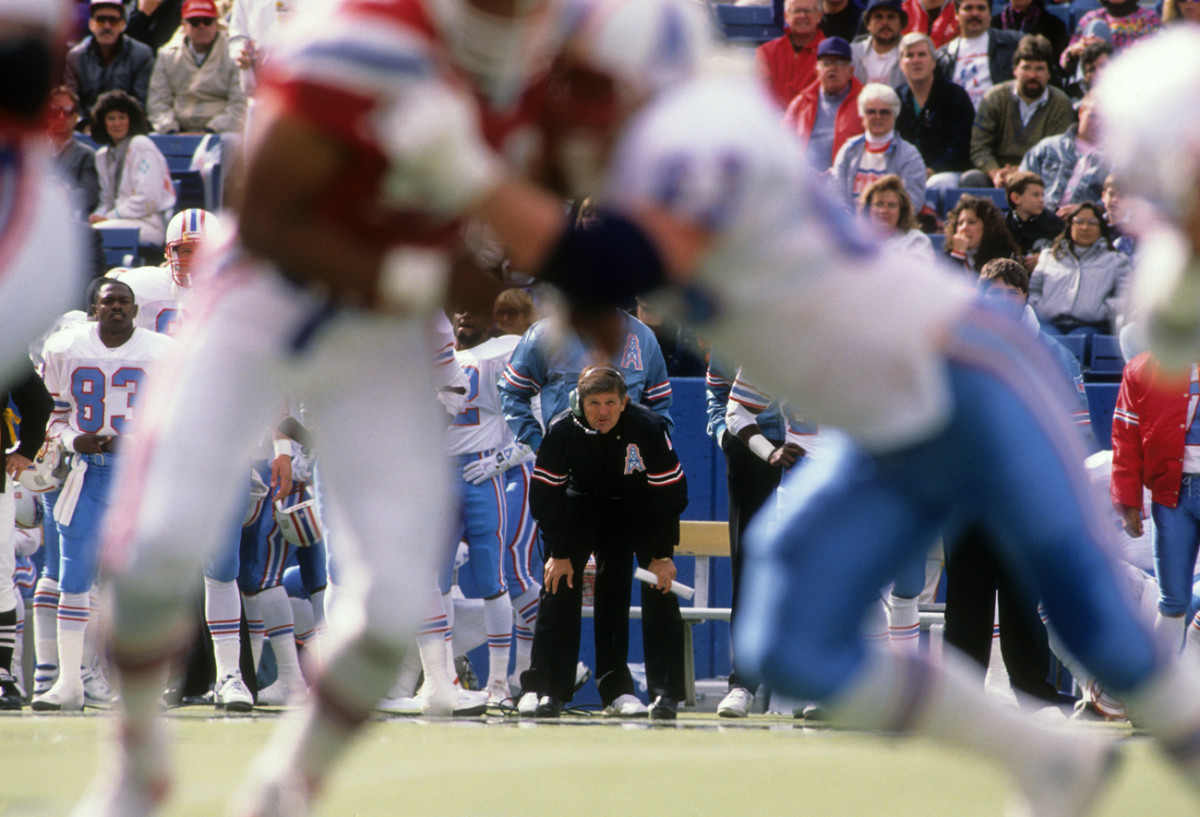
And so he found places to teach. In 2007, Glanville left Hawaii to lead Portland State, in FCS, where he went 9–24 over three seasons. In 2011 he spent five months steering the Hartford Colonials of the United Football League, until that franchise ran out of money. He has installed defenses as a guest coach for mapdot programs like Lafayette-Louisiana, Indiana State, University of the Incarnate Word and, most recently, D-III Brevard College, in North Carolina. As compensation he asks only for airfare and successive dinners at the area’s best Tex-Mex, steak and pizza restaurants, in that order. “I was consumed by staying current, you know?” he says.
It’s not all about football for Glanville. He paid regular visits to a youth detention center in Dandridge, Tenn.; he sat on the war wagon of friend Chip Ganassi’s NASCAR racing team; he spent time with his son, Justin, a sound engineer for the Avett Brothers. Last year he made another acting cameo, alongside Burt Reynolds in The Last Movie Star. “My small part was a stretch by the casting,” he says. “They had me play an ex-football coach.”
Mark Moseley, Last of the Straight-On Kickers
Glanville is being sarcastic, but the role was actually a stretch in a different sense. After all, he can barely imagine life without football. Preachers preach and coaches coach. Glanville was trying to get back into a full-time role sooner, but several factors conspired against him. For starters, he says, “you get at that age where everyone who was with you is either no longer coaching or dead. Who’s the Falcons owner now? Arthur Blank? He wouldn’t know me from a jar of eggs.”
Back from team meetings around 9:30 p.m., Glanville decamps into the coaches’ office at Les Prince Hall and rests his sunglasses atop a cluttered table. He cues up film of Hamilton’s first preseason opponent, the Toronto Argonauts, and starts quizzing fellow coaches on assignments. What are you going after him with? What personnel are you in?
If Hamilton is in fact hosting the final chapter of this singular career, Glanville has saved an ambitious challenge for his conclusion. The CFL is a different beast from American football; its nuances are often difficult for new arrivals to learn. Twelve men per side . . . 110-yard fields . . . three downs rather than four. But flash forward. It’s been two months now since camp; the CFL season has started, and through Week 5 the Ticats were leading the Eastern Division in fewest points allowed (84), opposing passing yards per game (219.3), sacks (seven) and forced fumbles (four). Glanville hasn’t lost his touch.
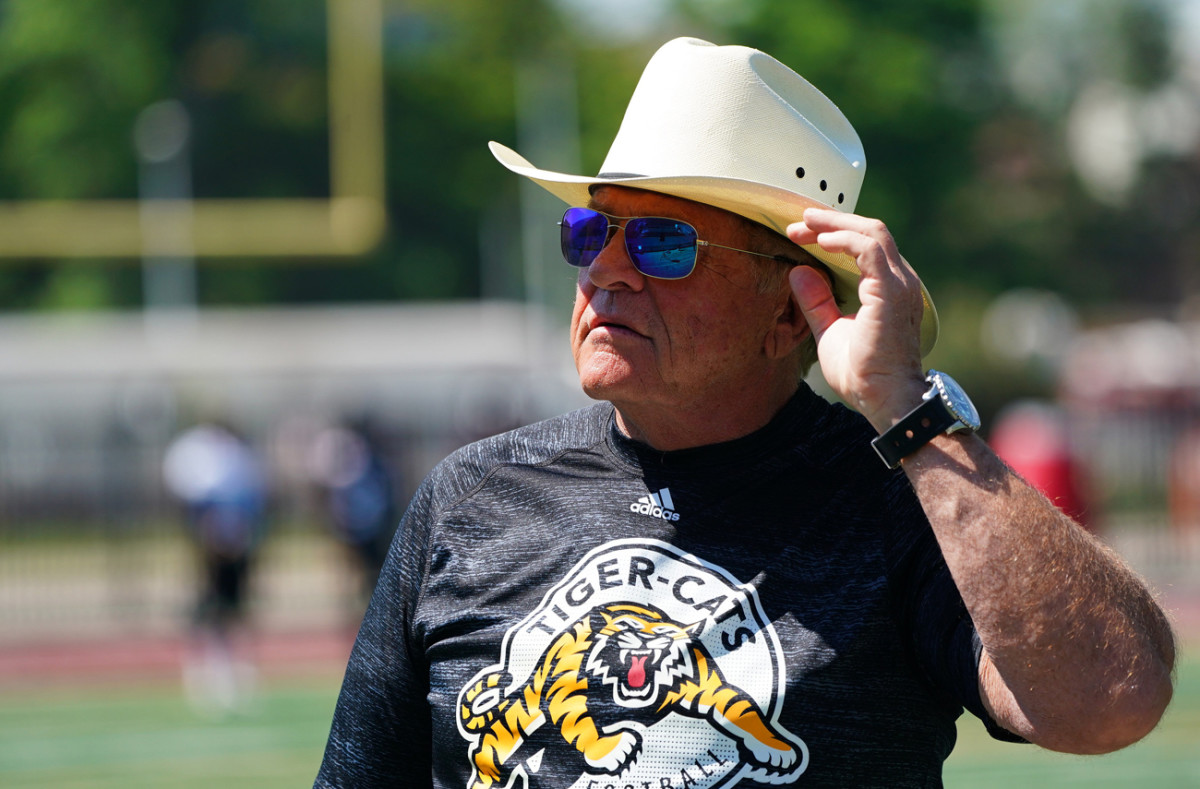
Not that anything suggests the Man in Black will take his cowboy hat into the sunset anytime soon. “Couldn’t have any more fun than I’m having, or it’d be illegal,” he declares. “Best job ever.” And so everyone else can have their tee times and beach vacations. Glanville will take the late nights and the film sessions, the stiff mattresses and the prison-cell dorm room.
“Here’s your headline: Fifty years to life,” he says. “I hope it’s life. My goal would be to drop dead on the practice field, running a blitz. Could you go any better way?”
Question or comment? Email us at talkback@themmqb.com.
